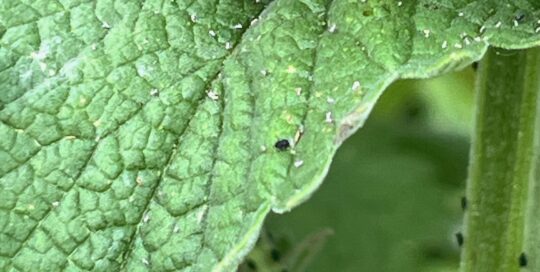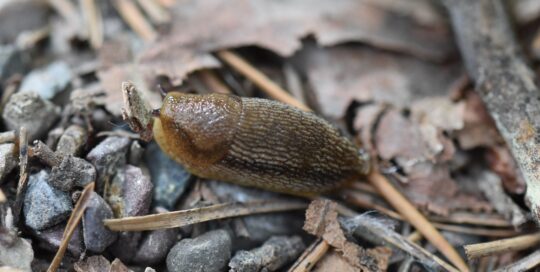Create an Oasis for Bumble Bees and Other Native Insects
Views: 3291

One of the many reasons I love what I do is because I’m able to talk to scientists who fill me in on the latest research as it relates to gardening. Recently, I read a report on a project out of the University of Illinois that demonstrated a marked decline in 4 of the 8 species of bumble bees they studied. I called the professor who led the study to gain a better perspective on what it meant.
While she was quick to point out it didn’t mean the sky is falling for bumble bees, it is a wake up call that something is going on to reduce some populations.
The Beneficial Bumble Bee
Bumble bees are a common sight to most of us in the garden. They meander from flower to flower with seemingly far less intensity than their honey bee cousins, but they’re critical pollinators.
Since bumble bees are native to their area, they’re more likely to be out foraging in colder, wetter conditions. When the honey bees are still snuggled in their hive on a chilly, rainy morning in the spring, the bumble bees will be out pollinating blueberries and other early blooming plants.
They’re also the best you can have for tomato, pepper, and other Solanum family production because of a trait called buzz pollination.
When I spoke to Eric Mader, assistant pollinator program director of the Xerces Society, a non-profit group geared towards invertebrate conservation, he explained that bumble bees grab the blossom with their legs and vibrate their body to the level of middle C on a tuning fork. The pollen immediately releases, resulting in better pollination. (He also suggested that I try this with a tuning fork. Hit it and hold it near a tomato blossom, and you can watch the pollen let loose.) This is absolutely amazing.
Reasons for Declining Bumble Bee Population
The bumble bee populations that are in decline are happening for several reasons. One is monoculture. In states such as Illinois or Iowa, there are tens of thousands of acres of corn and soybeans that used to be a thriving prairie. Obviously, the insects accustomed to multi-species environment don’t thrive on a single, heavily treated crop.
Another reason native pollinator (and all native insect) numbers are hit is because of pesticide use. Granted, homeowners aren’t pulling tractors with giant sprayers behind them or blitzing from the sky, but there are plenty of folks out with hand sprayers impacting smaller populations.
Attracting (and Keeping) Beneficial Insects
The good news is there’s a lot we can do to help native insects. There are some areas of the country where the most viable populations are in the small spaces of urban and suburban gardens. Creating an oasis is one way to keep the native pollinators close, as well as encouraging the beneficial bugs (the ones that prey on the ones we don’t like) where you need them.
Here are a few tips to keeping your natives content:
~ Plant native species that bloom from spring until frost. You want to encourage the insects to stick around the entire season by providing a constant food supply.
~ Slack off on the cleanup. There is a definitely a line between benign neglect and being a lazy gardener. But leaving a few areas of strategically located weeds (native plants), piles of stones or even stalks of hollow plants give insects places to nest and hide wont cause your neighbors to talk.
~ Use the least toxic options possible. When you have an insect problem, bring out the pea shooter before the big guns. If a vacuum cleaner works to suck off blister beetles, go with that on a small patch of beets or other infected crop versus spraying it with something that will affect other insects.
Doing your part to help these native insects can make an impact on the greater population, and help you keep your own micro environment in a happy balance.
The great bumble bee pic is copyright of iSailorr through istock.
Meet Amy Grisak
Amy is a freelance author and photographer in Great Falls, MT who specializes in gardening, foods, and sustainable agriculture. She provides information on every kind…
Amy's Recent Posts

The Complex Relationship of Aphids, Ants, and Ladybugs








